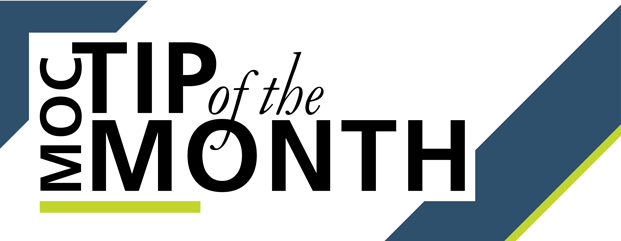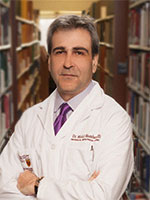MOC Tip of the Month
Dr. Mohit Bhandari, FRCSC
How to turn information overload into a practice advantage through scanning


Dr. Mohit Bhandari
Are you inundated with publications each month? Are you looking for ways to balance your responsibilities and still stay on top of all of your practice-related literature?
Scanning can help.
Quickly scanning short evidence-based summaries is a technique I use to triage my more in-depth reading. This strategy has helped me hone in on the most important articles to read, while still giving me a broad overview of other relevant literature.
Since integrating daily scanning into my practice, I’ve noticed improvements in my patient outcomes. It has also supported my continuing professional development, in particular in relation to my practice in orthopedic surgery and musculoskeletal medicine.
Start scanning! Five tips to get underway.
In this tip, I’ll share how you can integrate scanning into your daily routine and claim Section 2 MOC credits. OrthoEvidence*, UpToDate and the Cochrane database are just a few of the services available to facilitate scanning. Many major journals also have evidence-based portals.
- Integrate daily scans into your clinical routine: Evidence-based summaries have allowed me to create a daily scanning routine during my clinical time. When I get breaks, they’re not usually long enough to retrieve and read a primary paper. Instead, I update my knowledge regularly on one or more of the summary sites. I visit them 10-15 times a day in very short intervals (one to five minutes). It’s very easy for me to consume 20-30 summaries a day and claim Section 2 MOC credits for scanning.
- Complement your scans with in-depth journal reading: Reading individual journals takes a considerable amount of time so I often choose the articles I read based on summaries I scanned first. The 20-30 evidence reports I consume in a day may lead me to three or four journal articles that I read for more in-depth knowledge or for a nuanced interpretation of data that I want to evaluate further. The great thing is that I always feel updated, in a broad sense, of what’s coming out of my field.
- Bridge the inter-professional divide: Musculoskeletal medicine, for example, covers a broad and interdisciplinary group that includes surgeons like me, but also physiotherapists, nurses and different trainees. There’s a lot of crosspollination of evidence happening. A site like OrthoEvidence has rehabilitation articles that I wouldn’t normally read in my orthopedic core reading, but I value because they are relevant to the care of my patients and collaboration with allied health care professionals.
- Make decisions based on high-quality evidence: Several of the scanning sites summarize randomized clinical trials, which in my opinion provide some of the highest quality evidence available for evaluating whether or not a treatment works. For example, in my field there’s considerable debate right now about the best way to manage patients with hip fractures. We’ve been consulting the pre-appraised evidence summaries on the various approaches to treating hip fractures in order to inform us in making good decisions for our patients.
- Set your graduate students up for success: I always direct my graduate students who are looking to pursue an avenue of research to evidence-based summaries first. They do a quick search before embarking on any new project and I know they are basing their decisions and ideas on a strong foundation.
I like evidence-based summaries because their high-quality curated content helps keep me informed so I can make better decisions for my patients. They also provide opportunities for everyday learning and, of course, I can claim Section 2 MOC credits for my efforts.
Evidence-based summaries are a game-changer — a considerable return on your investment of time. I hope this tip helps you think about scanning in a new and expansive way.
*Conflict of Interest Disclosure: I founded OrthoEvidence, a point-of-care evidence-based summary, to fill a gap for pre-appraised evidence in surgery. It’s free for every orthopedic surgeon, sports medicine practitioner and physiotherapist in good standing through their national specialty society and there are tiers for additional services.